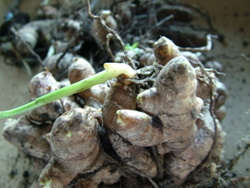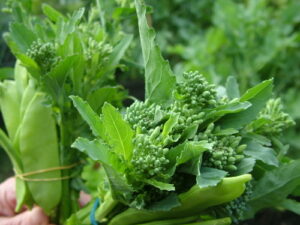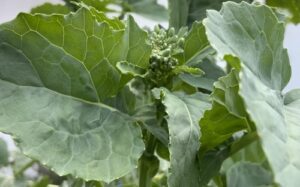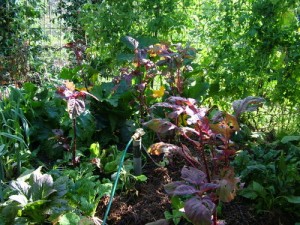It is actually all but spring here, but a final burst of cold weather is making me a little cautious. I am tempted to plant out all the spring perennials like asparagus but they are happy enough in the shadehouse at the moment so maybe I’ll wait a little.
I’m planting another round of all my root staples – carrots, parsnips, spring onions, beetroots – starting seeds off in the shadehouse, and planting out the seedlings started last month. If I do just a tray like this every month, we have a good steady supply.
 But my main little task today is to dig up some turmeric to take some rhizomes for planting as a gift for a friend I will be visiting over the weekend. Of the very many things I like about gardening, this ready supply of gifts is one of the best!
But my main little task today is to dig up some turmeric to take some rhizomes for planting as a gift for a friend I will be visiting over the weekend. Of the very many things I like about gardening, this ready supply of gifts is one of the best!
Fresh turmeric is one of those things that are so hugely different that you know why you garden! If you imagine the difference between fresh and dried ginger, you get the idea. Grated fresh turmeric goes in a great many more dishes than the obvious curries and stir fries. It adds a lovely touch of spiciness, not hot but interesting, to all sorts of dishes from eggs to pasta. I also love turmeric tea – just a slice with boiling water poured over it, allowed to steep for a minute or two.
And turmeric is one of those wonder-spices that have any number of health benefits. It has a compound called curcumin, that is an anti-oxidant, anti-inflammatory, and anti-biotic. There is some solid science backing its claims for effectiveness against cancer cells, arthritis, and infections.
Turmeric grows really easily in my climate, and now that it is well established it survives even in the dry years when I can’t give it enough water to produce well. One clump gives so much yield that I con’t care whether it produces well anyhow!
 All through summer it’s a really decorative plant – a metre and a half high clump with huge green lush leaves. In late summer it produces the most beautiful flowers. I often cut them for a vase. In winter it dies right back with not a sign of it above ground, which reduces its decorative value but probably helps it survive a bit of cold. It’s a native of South East Asian monsoon forests, so if you think about those kind of conditions you can imagine what it likes – warm weather, summer rain, good drainage, a bit of shade.
All through summer it’s a really decorative plant – a metre and a half high clump with huge green lush leaves. In late summer it produces the most beautiful flowers. I often cut them for a vase. In winter it dies right back with not a sign of it above ground, which reduces its decorative value but probably helps it survive a bit of cold. It’s a native of South East Asian monsoon forests, so if you think about those kind of conditions you can imagine what it likes – warm weather, summer rain, good drainage, a bit of shade.
If you can find someone with turmeric in their garden, you just need to dig a little round the edge of the clump to get a rhizome to plant, or if you can find some fresh turmeric in an Asian grocer or market, you can plant that. But you will need to do it in the next month or so to give it a whole season to establish.





Linda, this is fabulous, thank you! After the pasta, I told Pete we should try planting turmeric – now you’ve given us the instructions on how to do it! 🙂
I was wanting to try tumeric in this climate (Canberra), see what happens, but got some other things instead, oca, yacon, comfrey and ginger… if I can find a microclimate in our garden for these to survive, then I shall get some tumeric in too!
If the ginger copes, the turmeric is likely to do so too.
Beautiful photos! Happy planting, can’t wait for spring.
do you reckon I could grow it in the adelaide hills? I always worry about things from asian grocery being so sprayed they are impotent – but you reckon it would work?
I wonder if quarantine would allow import of live turmeric? Would be bizarre to import it when it grows so easily here. I guess the only way to find out is to try it. In the Adelaide Hills your challenge will be to get it in a shady, warm spot where you can keep water up to it over summer.